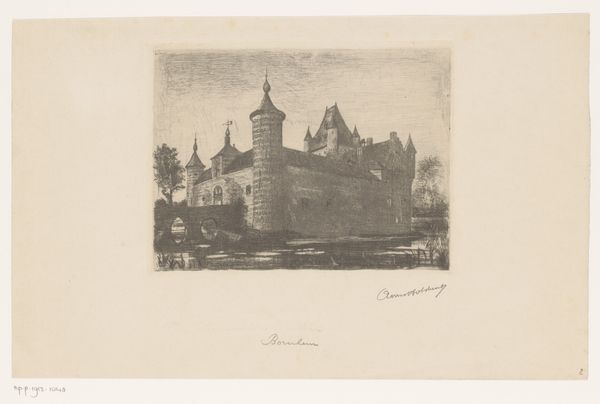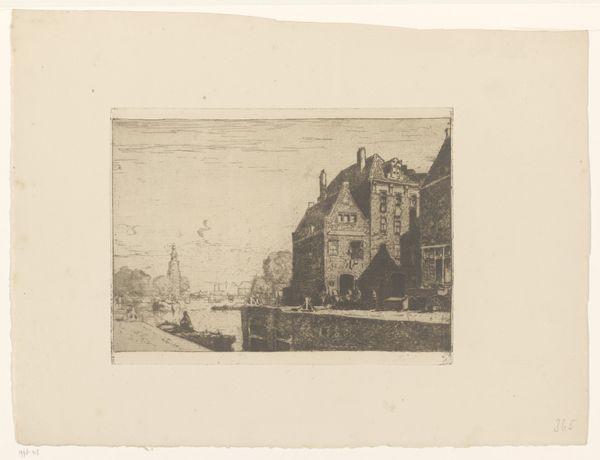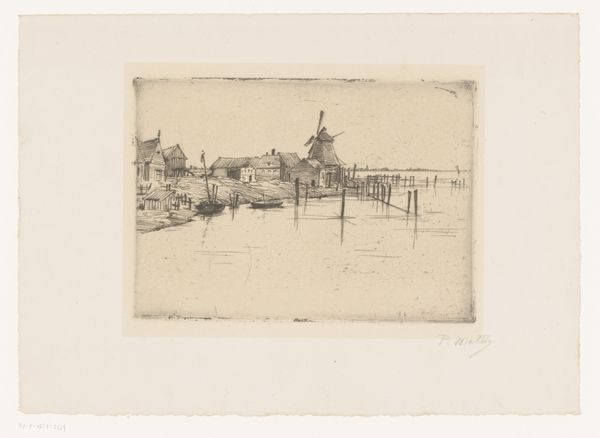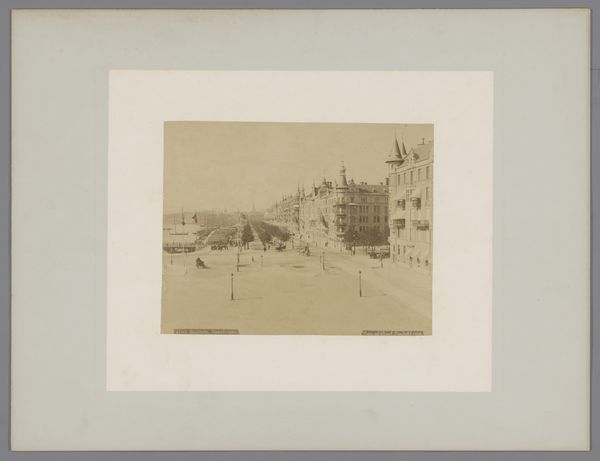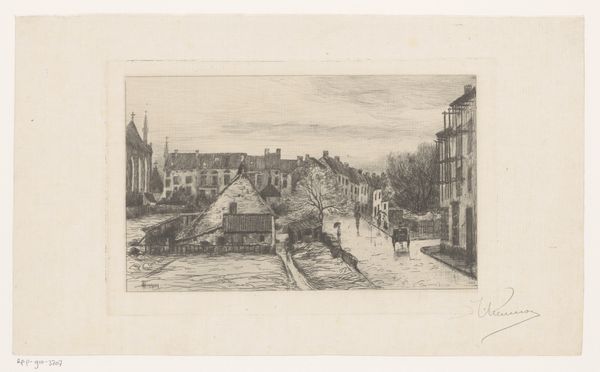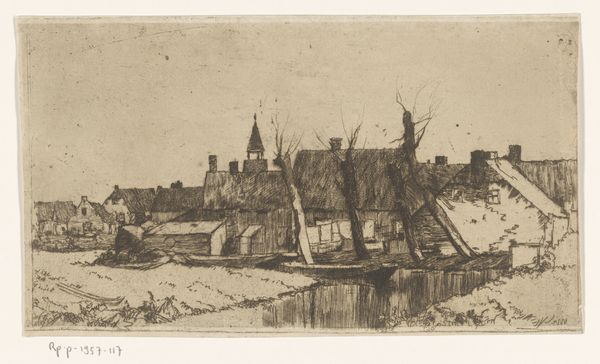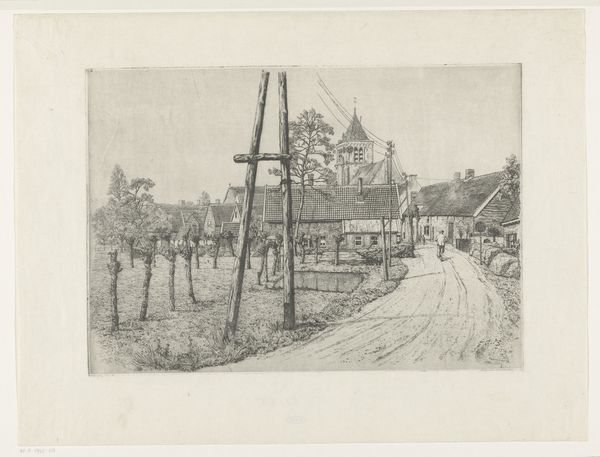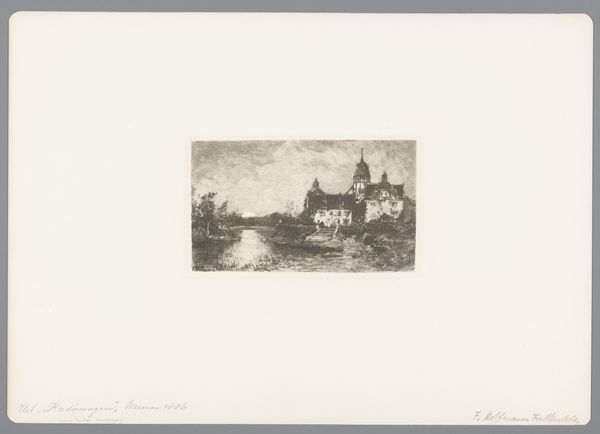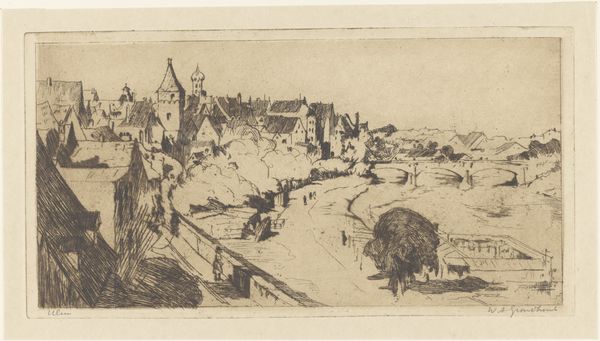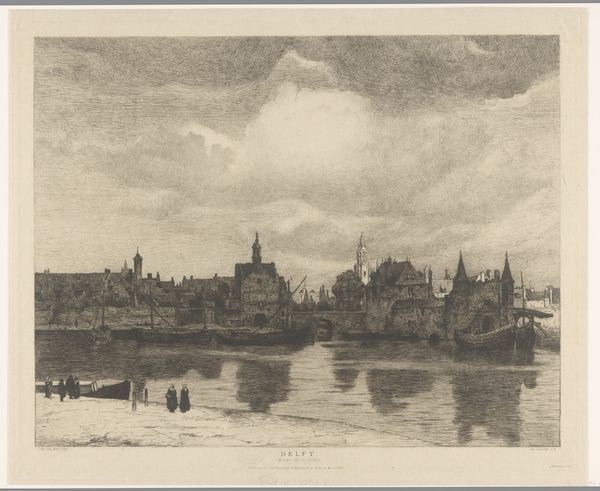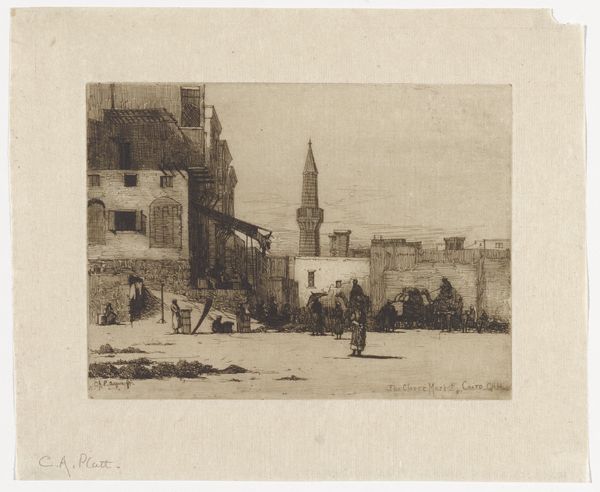
Dimensions: height 110 mm, width 123 mm
Copyright: Rijks Museum: Open Domain
Curator: Witsen’s etching, "Nieuwmarkt in Amsterdam," circa 1897, presents a vision of urban life through the lens of Dutch Impressionism. Editor: My first impression is one of quiet activity, or perhaps even a somber bustling. The tonal range feels quite narrow, doesn’t it? There's a concentration on the process that draws my attention to the subtle gradations achieved through etching. Curator: Absolutely. Witsen situates this image within the complex socio-political dynamics of Amsterdam at the close of the 19th century, a city undergoing massive urban development. We can read the composition as a reflection on the transformations of the city and their impact on the population. Editor: The material process becomes almost a form of documentation itself. Consider how the lines, etched meticulously into the metal plate, capture the city’s buildings and waterfront, really bringing it into a gritty materiality. We can almost smell the river water, hear the clang of the metal, and even get the feeling that these boats are waiting for a working day, maybe? Curator: I agree. And if we think about Witsen’s background and circle, it's clear his vision reflects a melancholic, yet very critical gaze towards societal changes of the time. It acknowledges a shift in how identities and communities were formed. Editor: These types of etching techniques allowed artists a wider degree of material engagement to communicate their ideas; the use of acids, tools to create impressions – it shows how labour intersects with artistic vision. Curator: A good point. We shouldn't lose sight of the wider European context of social reform movements influencing art at this moment either, though! Editor: Looking closely at the texture and technique gives one a good sense of the amount of care involved. Curator: Studying this, what becomes apparent is the possibility for printmaking to act as a form of both historical commentary and creative interpretation. Editor: A testament to the power found in this medium of art!
Comments
No comments
Be the first to comment and join the conversation on the ultimate creative platform.
